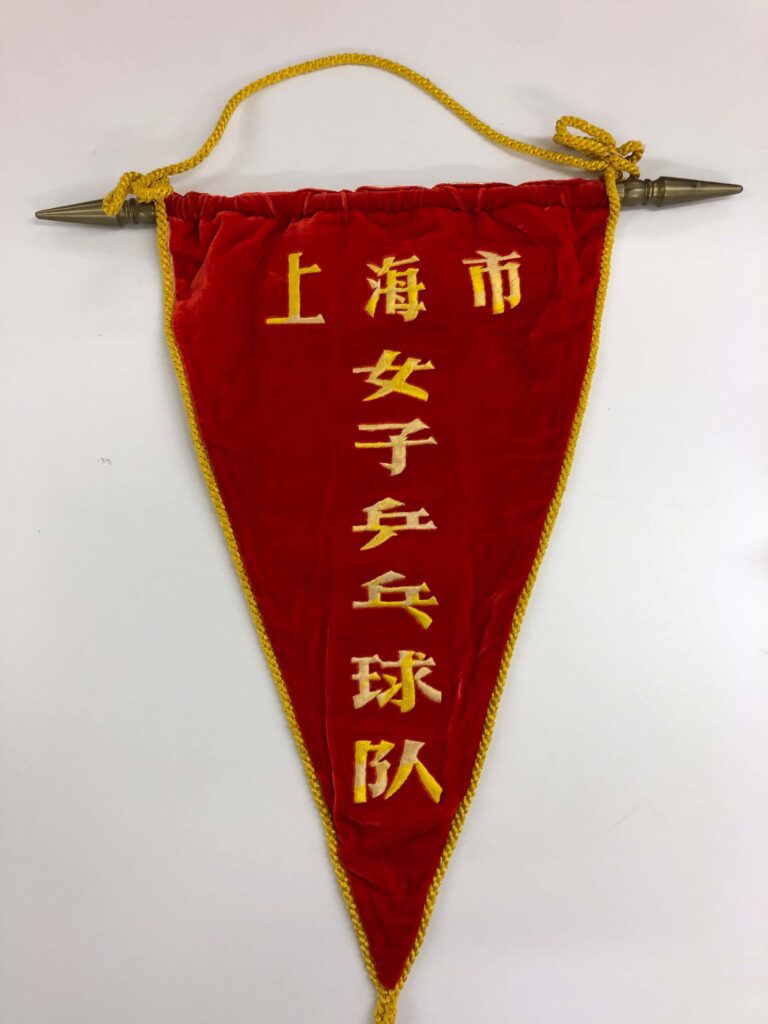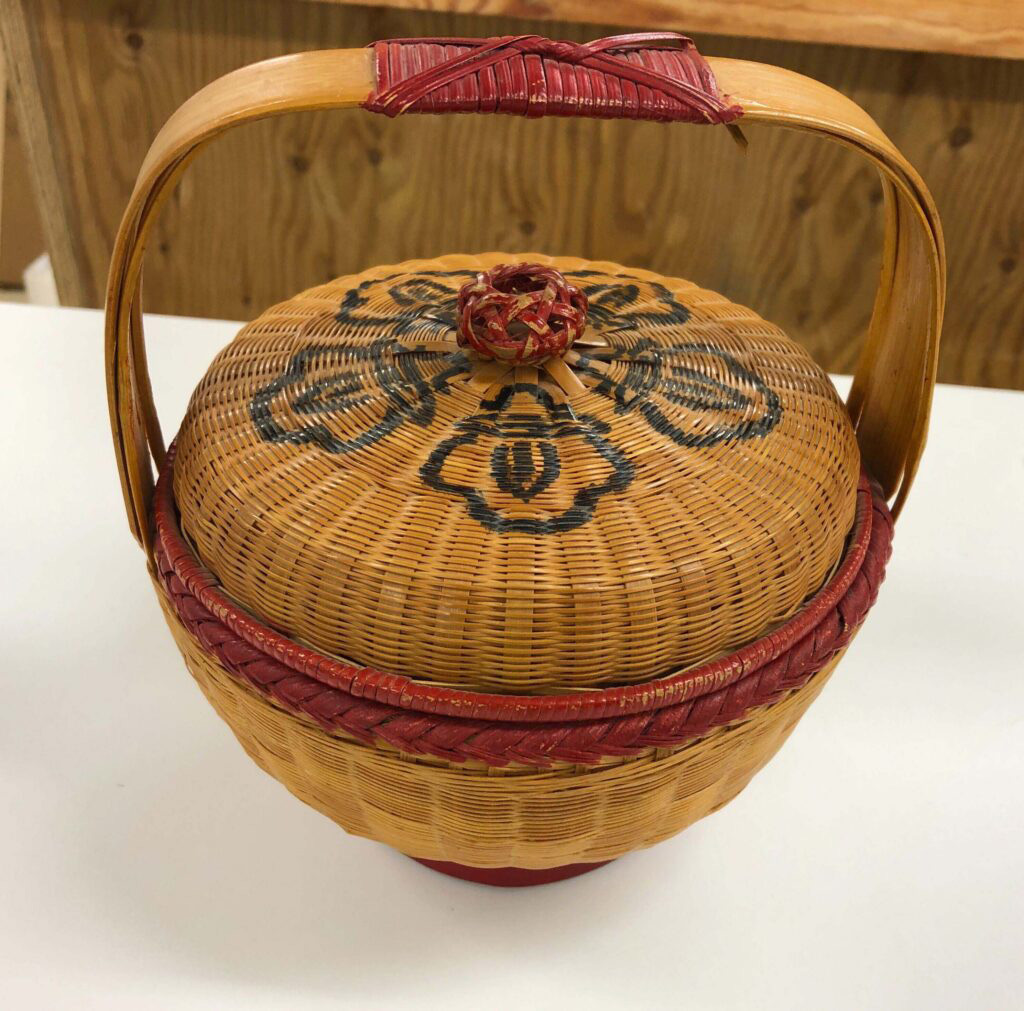Ping-Pong Diplomacy: Artifacts from the Historic 1971 U.S. Table Tennis Trip to China
August 5, 2021
In April 1971, nine players from the U.S. Table Tennis team took a historic trip to China, becoming the first delegation of Americans to visit the country in decades. Following the 1949 Chinese revolution, there had been no diplomatic ties, limited trade, and few contacts between the United States and the People’s Republic of China.
Their trip was the start of what became known as “ping-pong diplomacy” and helped lay the groundwork for establishing official diplomatic relations between the United States and the People’s Republic of China. Ping-pong diplomacy also led to improved people-to-people understanding and cultural exchange.
Connie Sweeris, one of the nine players who traveled to China, recently donated a collection of personal mementos from that 1971 trip, as well as subsequent anniversary trips, to the National Museum of American Diplomacy’s permanent collection. The museum is thrilled to share these items with the public and to include them in future exhibits and programming.
The Beginning of Ping-Pong Diplomacy: A Surprise Invitation
The U.S. team was at the 1971 World Table Tennis Championship in Nagoya, Japan, when an encounter between Glenn Cowan of the U.S. team and Zhuang Zedong of the Chinese team became an international sensation. Cowan had missed his bus following practice and boarded the Chinese team’s bus. Zhuang approached the American, shaking his hand and offering him a depiction of the Huangshan Mountains on a piece of silk cloth.
Chinese three-time world champion Ping-Pong player Zhuang Zedong (left) presented a Yellow Mountain silk weaving art piece to American athlete Glenn Cowan (right) on April 4, 1971.
Photo credit: Xinhua News Agency.
When they exited the bus, journalists snapped photos of the two together. Two days later, the U.S. team received an official invitation to travel to China and play exhibition matches against the Chinese team. The United States accepted the invitation and everyone rushed to make arrangements.
U.S. Department of State consular officials in Japan, in advance of the team’s onward journey to China, made a simple but profound change to their passports. On the page warning travelers of legal penalties “for travel to or in Communist-controlled portions” of the listed countries, the officials simply took a black marker and carefully crossed-out “China.”
Connie Sweeris's U.S. Passport
Connie Sweeris’s modified passport. On the page warning travelers of legal penalties for traveling to Communist-controlled places, State Department consular officials crossed out “China” for this trip. Gift of Connie and Dell Sweeris.
1967
FROM THE COLLECTION
The team left Japan for Hong Kong, where they crossed a bridge connecting British-controlled Hong Kong to mainland China on April 10, 1971. Connie Sweeris took out her camera and quickly snapped a photo of the bridge and the guards on it as they crossed the border on foot.

U.S. Table Tennis player Connie Sweeris quickly took this photo of the guarded Hong Kong-China border that the team crossed on foot in April 1971. Photo courtesy of Connie Sweeris.
Once in China, the team traveled by plane and train to Beijing, Shanghai, and Tianjin. Upon arriving at their first destination and disembarking their plane, the U.S. team, Chinese players, and welcoming Chinese officials posed for a group photo on the tarmac.

The U.S. Table Tennis team, Chinese players, and Chinese officials pose for a group photo on the tarmac in Beijing, April 1971. Photo courtesy of Connie Sweeris.
As part of their welcome, the first Premier of the People’s Republic of China, Zhou Enlai, personally greeted each player. Connie Sweeris is pictured here shaking hands with Zhou.

U.S. Table Tennis player Connie Sweeris shakes hands with Premier Zhou Enlai.
Photo Courtesy of Connie Sweeris.
American and Chinese Players Play “Friendship Matches”
The games they played were billed as “friendship matches” by their hosts. The Chinese team was known by table tennis players as among the best in the world. Sweeris and her teammates noticed that the Chinese players seemed to “take it easy” on them at times out of courtesy towards their guests.
At the exhibition match in Beijing, at Capital Indoor Stadium, some 20,000 fans packed the venue. Both teams posed for this group photo, with the crowd of fans visible in the background.
U.S. and Chinese exhibition teams pose for a photo at the exhibition, April 1971. Photo courtesy of Connie Sweeris.
After a match in Shanghai, one of the Chinese players Sweeris had competed against gave her this pennant. The Chinese characters translate to “Shanghai City Women’s Table Tennis Team Match, April 1971.”

Pennant commemorating a match in Shanghai. Gift of Connie and Dell Sweeris.
Beyond Ping-Pong: Chinese and American Players Exchange Culture

Photo of the Forbidden City in Beijing, China, April 1971.
Photo courtesy of Connie Sweeris.
The invitation extended to the U.S. team included not only the exhibition matches but banquets, entertainment, and tours of sights across the country as honored guests.
The team visited some of China’s most famous landmarks, including the Forbidden City palace compound in central Beijing and the famous Great Wall of China. While touring the Great Wall, they posed for a group photo that would become iconic of their trip — and be featured on the cover of Time magazine.

The U.S. Table Tennis team poses on the Great Wall, April 1971.
Photo courtesy of Connie Sweeris.
Banquets featuring eight or more courses introduced the team to unfamiliar foods. Sweeris saved this menu which included handwritten English translations.
China
1971
FROM THE COLLECTION
Beijing Banquet Menu
Connie Sweeris, one of the nine players, kept this menu from one of the many banquets they were invited to during the trip. Featuring eight or more courses, the banquets introduced them to unfamiliar foods. Players were provided with translated menus so they could understand what they were being served.View the Menu
Visits to selected examples of life and work in Mao’s China were also on the itinerary, including a steel mill and a farming community. While visiting the farming community, Sweeris noticed a group of women weaving baskets. She approached them for a better look, and one of the women presented her with this small basket as a gift.

This woven basket from a farming community was given to Connie Sweeris as a gift.
Gift of Connie and Dell Sweeris.
The group also attended cultural performances, including one captured in this photo taken by Sweeris of a dance troupe performing part of a drama titled “The Red Detachment of Women.”

A Chinese dance troupe performs for U.S. Table Tennis players, April 1971.
Photo courtesy of Connie Sweeris.
While visiting small “friendship stores” set up by their hosts, each stocked with potential souvenirs, Connie walked away with several mementos. She was presented with a “Double Happiness” brand table tennis paddle and picked up a handkerchief featuring a table tennis-themed design, as well as an English copy of Chairman Mao’s “Little Red Book” of quotations.
Ping-Pong Paddle
“Double Happiness” paddle. Gift of Connie and Dell Sweeris.
1971
FROM THE COLLECTION

Handkerchief featuring embroidered table tennis-themed design.
Gift of Connie and Dell Sweeris.

English language version of Mao’s “Little Red Book.”
Gift of Connie and Dell Sweeris
After a whirlwind visit, the U.S. team exited China through Hong Kong on April 17. Connie Sweeris’s passport includes these stamps from the border crossing marking their entry and exit.
The museum sincerely thanks Connie Sweeris and her husband Dell for their donation of these remarkable artifacts, as well as photos and video footage.
Sources consulted








Commenti
Posta un commento